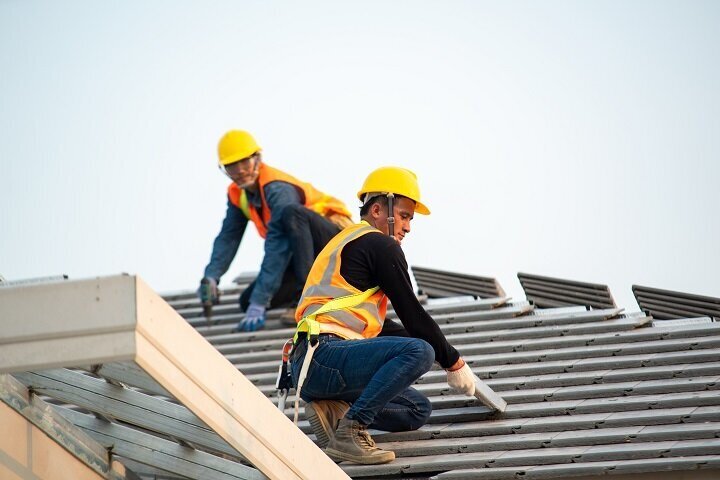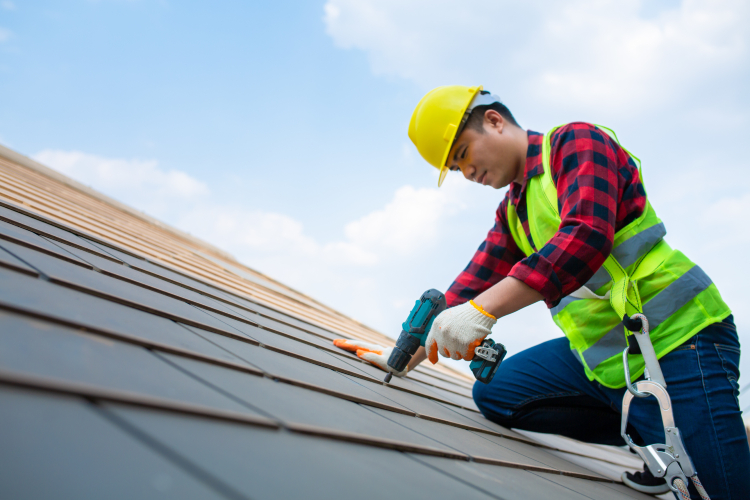How to Review Various Roofing Choices for Your Structure Requirements
Assessing roof covering alternatives for your structure needs an extensive approach that considers various variables such as the meant use of the framework, regional environment problems, and product features - Roofer. It is essential to consider the benefits and disadvantages of different roofing kinds, from asphalt roof shingles to metal and clay ceramic tiles, while likewise factoring in preliminary costs and long-lasting maintenance.
Analyzing Your Building's Demands
To properly evaluate roof alternatives, begin by completely evaluating your building's requirements. Begin by considering the structure's intended use, as various frameworks may require differing roofing requirements. Domestic roofings often prioritize visual appeals and insulation, while business buildings might concentrate on toughness and load-bearing ability.
Following, review the neighborhood environment problems that will influence roof covering efficiency. Variables such as temperature level variations, precipitation levels, and wind patterns can influence material option and layout. A roof covering system that masters a pleasant climate might not do too in areas susceptible to hefty snowfall or extreme heat.
In addition, evaluate the structural honesty of your building. Ensure that the existing framework can support the selected roof products, particularly if taking into consideration heavier choices. It is also critical to assess any regional building ordinance or laws that may determine certain requirements for roof systems.

Comparing Roof Covering Products
Once a thorough assessment of your structure's demands has actually been completed, the following action includes comparing numerous roof materials. Each product supplies unique advantages and downsides, making it vital to align your selection with your details needs and circumstances.
Asphalt shingles are extensively identified for their affordability and convenience of installment, making them a popular option for residential structures. On the various other hand, steel roofing, known for its sturdiness and durability, can stand up to severe climate condition but may feature a greater first investment.
Clay and concrete tiles give outstanding thermal insulation and aesthetic charm, especially for Mediterranean-style design, yet they call for an even more durable architectural assistance due to their weight. Wood shakes offer an all-natural look and good insulation residential properties yet might demand much more upkeep and are susceptible to fire risks.
Examining Cost and Budget
Analyzing your roofing alternatives demands a cautious examination of price and budget plan considerations. The general budget plan for a roof job makes up a number of aspects, consisting of material expenses, labor expenses, maintenance, and possible long-term cost savings. It is necessary to develop a clear spending plan before exploring particular roofing materials, as this will guide the decision-making procedure and assist you avoid overspending.
Begin by acquiring quotes from several specialists to comprehend labor prices in your region. Guarantee that these estimates include all essential solutions, such as removal of the old roofing, installation, and any added attributes, like insulation or ventilation renovations - Perrysburg Roofer. Next, examine the cost of various roof materials, taking into consideration both first installation costs and expected life expectancy

Recognizing Power Performance
Energy efficiency plays an important function in the option of roof products and systems, substantially affecting both power consumption and general convenience within a structure. A well-chosen roofing system can enhance thermal efficiency, minimizing the demand for heating and cooling down systems, which consequently lowers power expenses and decreases ecological influence.
When evaluating roofing alternatives, take into consideration materials that mirror rather than soak up warm. Light or reflective roofing items can significantly lower roof covering surface area temperature levels, bring about lower power use throughout hot months. In addition, appropriate insulation and ventilation are vital to maximize the energy efficiency of the entire roofing system. Insulation prevents warm transfer, while ventilation reduces warm buildup in the attic room area.
Another important factor is the roof covering system's durability and upkeep requirements. Durable materials that require much less frequent substitute add to lasting energy cost savings. The power effectiveness of a roof covering system can additionally be analyzed via its conformity with established sustainability rankings such as ENERGY CELEBRITY or LEED.
Taking Into Consideration Visual Appeal
A roofing's visual appeal considerably affects the general appearance of a building, matching its building style and improving curb charm. Sylvania Roofing Contractor. When evaluating roof covering alternatives, it is necessary to consider how the chosen product, color, and style will certainly integrate with the existing structure and community. A well-designed roofing can boost also the most basic of buildings, changing them right into visual prime focus
Various roof covering products offer various aesthetic top qualities. Conventional tiles might evoke a timeless beauty, while metal roof covering can present a modern-day, streamlined appearance. Furthermore, the basics color of the roofing material plays a vital role; lighter tones can make a structure appear even more sizable, while darker tones may produce a cozier ambiance.
In addition, building aspects, such as dormers and eaves, can enhance the roof covering's visual influence. It is suggested to speak with specialist designers or architects to guarantee the selected roof choice aligns with the overall design intent. Inevitably, a roofing must not just provide practical benefits but also add positively to the structure's aesthetic, reflecting the owner's preference and the character of the surrounding setting.
Conclusion
